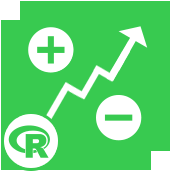 AB Trend Tool
AB Trend Tool AB Trend Tool
AB Trend ToolThe AB Trend tool creates measures of trend and seasonal patterns (one value per test unit, such as a store or a customer) that can be used in helping to match treatment to control units for A/B testing. The trend measure is also likely to be of interest in its own right. The trend measure is based on period to period percentage changes in the rolling average (taken over a one year period to control for seasonal effects) in a performance measure of interest. The same performance measure is used to assess seasonal effects. In particular, the percentage of the total level of the performance measure of interest in each reporting period is used as the measure to assess seasonal patterns. For example, if the performance measure is sales and the reporting period is weeks, then the percentage of total sales (over a 52 week period) that fall into each of 52 weeks is used. The measures of the per period percentage of annual sales are dimensionally reduced via principal components analysis.
Since the measures involve using over a year's worth of historic data, it is important to have sufficient historic data available that is prior to the start of the test. If this condition is not met, then an error will occur.
This tool uses the R programming language. Go to Options > Download Predictive Tools to install R and the packages used by the R Tool.
An Alteryx data stream that contains the following fields: (1) a unit identifier (e.g., a customer or store identification code); (2) a Date or DateTime field with date information for the reporting periods; and (3) a performance measure (such as sales or visitor traffic) that will be the basis of the trend and seasonality measures.
Input Data: Use the drop downs to specify:
Date Values: Use the drop downs to specify:
The output is a data stream containing the following columns:
©2018 Alteryx, Inc., all rights reserved. Allocate®, Alteryx®, Guzzler®, and Solocast® are registered trademarks of Alteryx, Inc.